Meet Anand Malligevad, Bengaluru’s expert lake rejuvenator who believes that nature gives as good as it gets
IT City, Garden City, Electronic City, are some of the sobriquets that Bengaluru has earned over the last few years. The city is synonymous with tall buildings of corporate companies, burgeoning traffic and a cosmopolitan city. However, a few decades ago Bengaluru was a quaint city and was known as a pensioners paradise and a city of lakes. In 1980’s there were nearly 300 lakes across the Bengaluru district, of which only about 180 remain on paper with the rest succumbing to the real estate mafia, encroachments and neglect. Since 2014 itself, 5 lakes have disappeared and many others are on the brink of drying up permanently. Currently, only 34 lakes are in a healthy condition in the city.
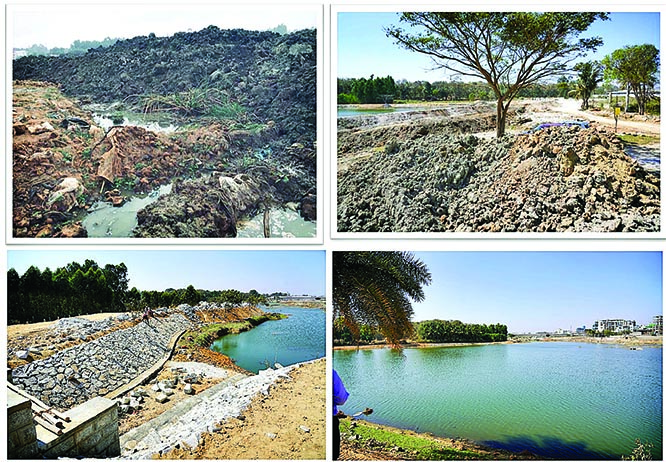
Konasandra Lake after restoration
The city is severely water stressed and entirely dependant on Kaveri water brought from 100s of kilometres. Groundwater has been over utilised and the city is expected to run out of groundwater in a couple of years. The government, instead of rejuvenating lakes and other water bodies, is bent upon fetching water to the city from other parts of the state. Experts have suggested that rejuvenation of lakes and other water bodies in the town can take care of the majority of its water needs. Neither the city corporation nor the state government seems to be taking this seriously.
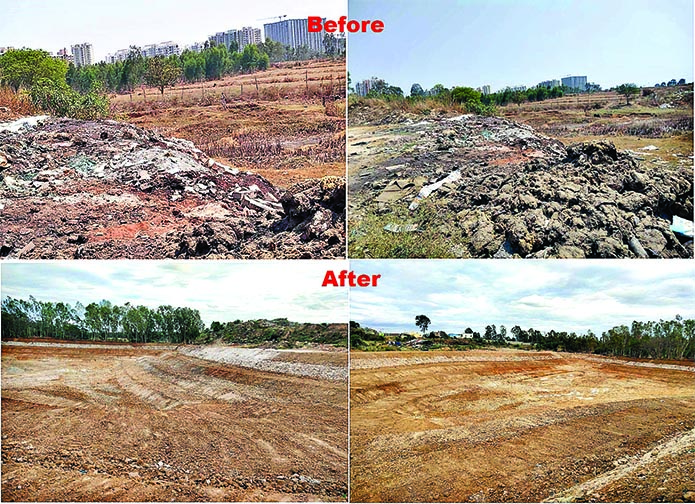
Gavi Kere Restoration
Most efforts in lake restoration which are executed in collaboration with corporate companies end up just cleaning the weeds and beautifying parts of the lake and true rejuvenation seldom happens. Periodic destruction of lake habitat is a testimony to this and hardly anyone seems to bother as long as it serves their immediate purpose. There are a few handfuls of those who have been working and warning the people and government to wake up and act before its too late. One such dedicated, visionary and one who has showcased how lakes can be rejuvenated in urban environments is Anand Malligavad.
In 2016, Anand started to work on the restoration of the Kyalasanahalli lake in Anekal Taluk near Bengaluru city. The lake was spread over 36 acres and was filled with garbage from nearby areas, waste deposits, refused plastics and the entire area of the lake had become a dry spaceA techie by profession, Anand hails from far off Koppal and came to the city for a job. He held a senior position in a top software company and drew a hefty salary. Bengaluru had become his city over the years and Anand, a nature lover, was not able to witness the destruction of its water bodies. Instead of complaining or involving in cosmetic exercises, Anand decided to say goodbye to his software job and get into the rejuvenation of lakes full time. Anand’s aim is not just to restore lakes but also ensure that the lakes are alive for future generations too.
Anand analyses each lake scientifically and believes that each lake needs a unique solution and there is no ‘one-size-fits-all’ solution to rejuvenate water bodies. This is the mistake government agencies and corporates do. He analyses the flow of water to the lake, takes measures to clear encroachments, restores the entire natural habitat with its flora and fauna as also ensure that it is beneficial to the local populace so that they see the worth in maintaining the lake in its pristine best. Likewise, Anand has restored four lakes in the city viz., Kyalasanahalli Lake, Vabasandra Lake, Konasandra Lake and Gavi Kere for which the work is almost complete.
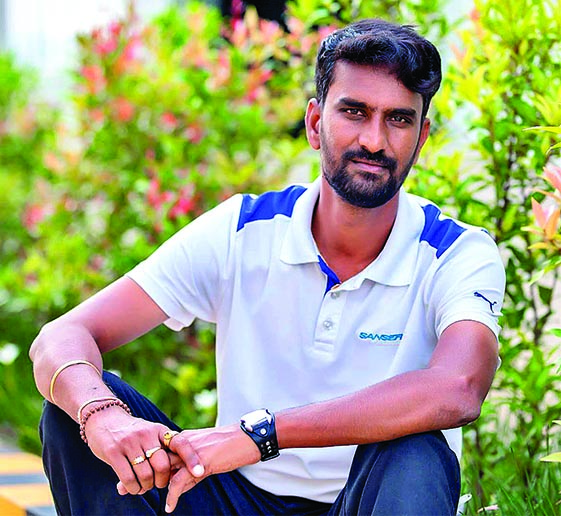
Anand Malligavad
In 2016, Anand started to work on the restoration of the Kyalasanahalli lake in Anekal Taluk near Bengaluru city. The lake was spread over 36 acres and was filled with garbage from nearby areas, waste deposits, refused plastics and the entire area of the lake had become a dry space. Anand then started to collect the required funds to start work on the lake. He approached companies and raised Rs.95 lakh through their CSR funds. The funds enabled him to hire services of excavators through which 12-13 feet of silt was removed. 12 acres which was encroached was restored for the lake as also the pathways for water were cleared. The task which took 45 days with Anand working incessantly throughout resulted in the lake being restored completely. Today the lake which looked like a dumping yard is filled with 15 feet of water.
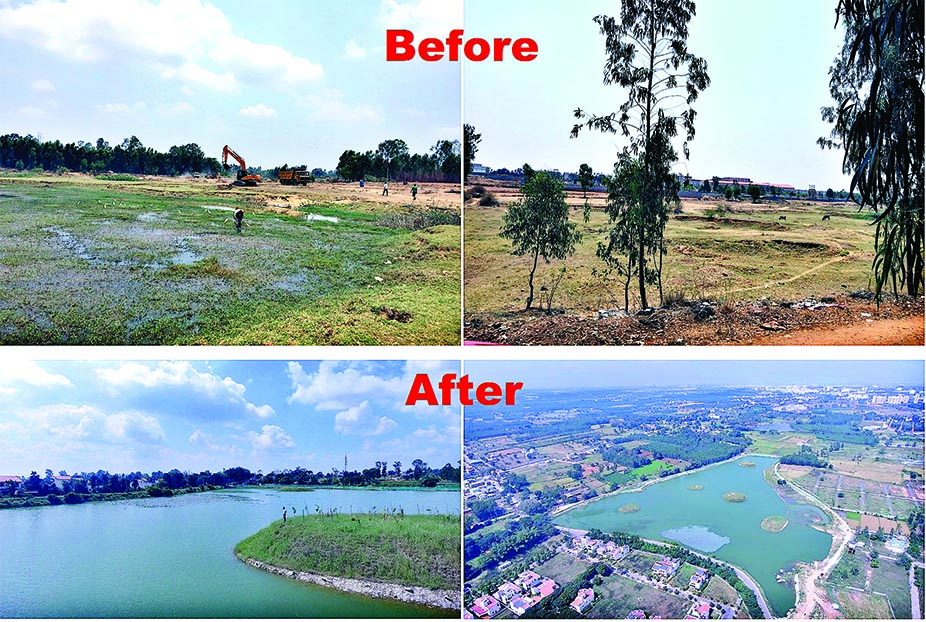
Kyalasanahalli Lake Anekal, Bengaluru
Bengaluru – City of ‘Dead’ Lakes
A 2016 study on lakes by a team of researchers headed by Professor Ramachandra TV from the Energy and Wetlands Research Group, Centre for Ecological Sciences, IISc, Bangalore surveyed 105 lakes in the city. It found that only four seemed to be in good condition while 25 lakes were in a terrible state fully covered with macrophytes or dumped with solid or liquid wastes and with little or no water
The study found that:
- 98% of the lakes were encroached by mafia
- 90% of the lakes were sewage-fed due to a sustained flow of untreated sewage and industrial effluents, dumping of solid wastes and building debris.
- Water quality analysis of 80 lakes found that almost half of the lakes were highly polluted.
- None of the lakes had water that was fit for drinking according to standards set by the Central Pollution Control Board (CPCB).
- 79% of lakes fell under Class E category classified by CPCB as suitable for irrigation, industrial cooling or controlled waste disposal.
- 29% of lakes could be classified under Class E and D as suitable for fish culture and wildlife propagation.
- Only one lake fell under Class A that was found to be suitable for drinking purposes according to the CPCB classification.
The main reasons for this state of lakes as per the report are a lack of:
- Sense of belonging among all the stakeholders
- Sincerity and poor decision making from the bureaucracy
- Governance and poor implementation of regulatory norms
- Coordination between state agencies who were custodians of the lakes leading to their poor maintenance
Anand spends considerable time and effort in educating people who reside near the lake. He wishes to make them the stakeholders as without their interest and participation, the lakes cannot survive. Local people are an integral part of his solutions in the 4 lakes he has rejuvenated. The Miyawaki forest he has created on the islands in the lakes and around have around 38,000 trees among which are 6000 fruit bearing trees and medicinal plants of 23 species.


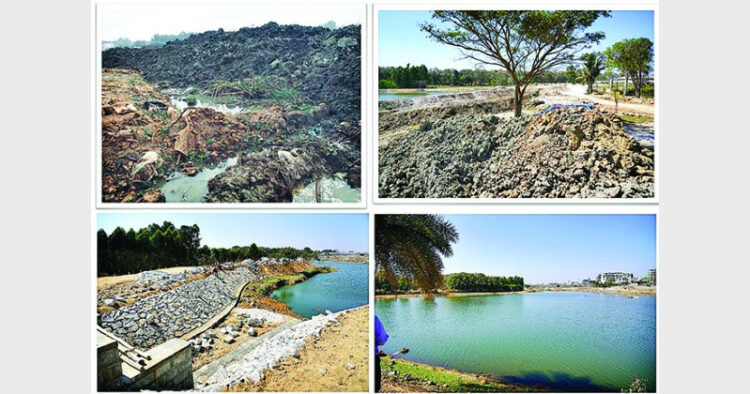










Comments